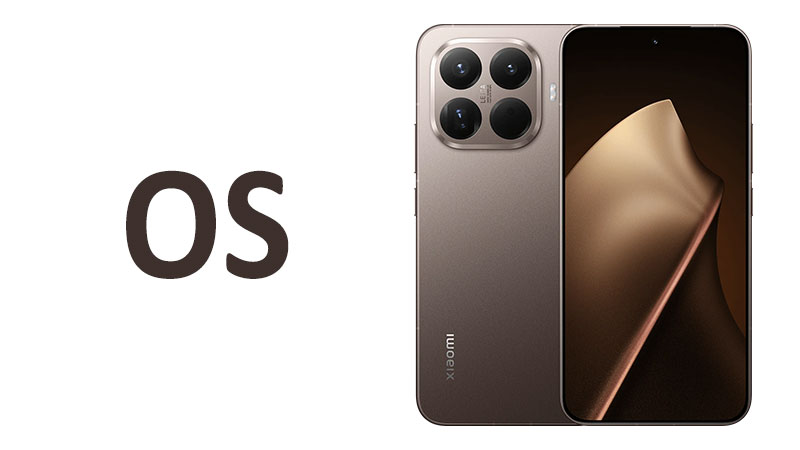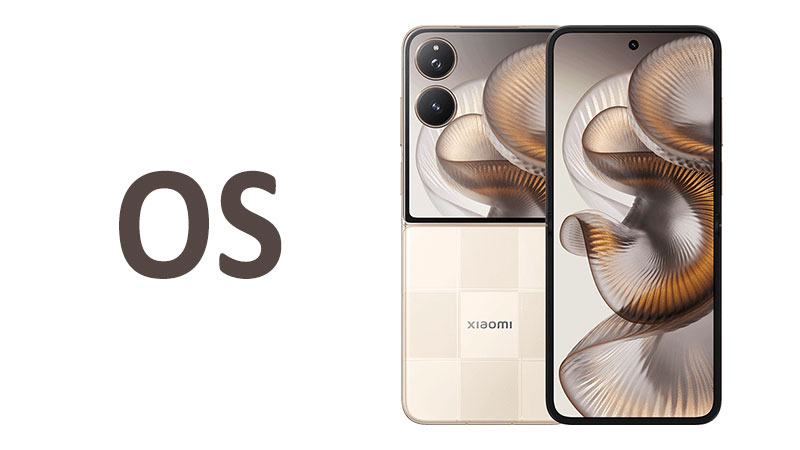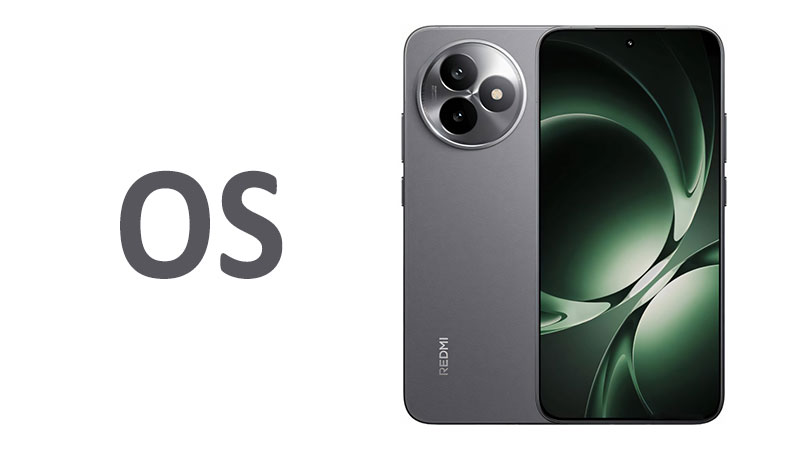The Xiaomi 15T Pro OS will define the mobile experience for its users. This new flagship device from Xiaomi launches with a powerful combination of the underlying Android 15 platform and the proprietary HyperOS 2 interface. Understanding this crucial software partnership is essential for potential buyers and technology enthusiasts alike. The operating system determines the phone’s speed, security, battery efficiency, and overall usability. This extensive article explores every aspect of the Xiaomi 15T Pro’s operating system. We will examine the deep integration of Android 15 with HyperOS 2. This includes key features, specialized comparisons, and critical points for any interested buyer.
Introduction to Android 15 and HyperOS 2 Integration
The operating system partnership between Xiaomi 15T Pro and its new OS is exceptionally important. It offers users a blend of Google’s fundamental updates and Xiaomi’s refined custom features. Android 15 provides a stable, modern, and secure foundation. It introduces core system-level improvements. Meanwhile, HyperOS 2 layers a beautiful and functional custom experience on top. It focuses heavily on ecosystem connectivity and streamlined performance. This dual-layer approach aims to deliver maximum efficiency and a highly personalized user journey.
Android 15: The Secure and Powerful Foundation
Android 15 brings several major advancements to the mobile operating system landscape. These upgrades are centered on privacy, performance, and modern functionality. The improvements affect every app and system process running on the Xiaomi 15T Pro. Therefore, these foundational changes are key to the phone’s success.
Key Features and Anticipated Improvements
Android 15 is set to enhance core performance metrics. It introduces deeper optimization for battery life. This means background processes become more restrictive. Consequently, the phone conserves power more effectively throughout the day. Furthermore, the memory management system receives a significant overhaul. This ensures faster app loading and seamless multitasking capabilities. Developers also gain access to new APIs. These tools allow for richer, more adaptive app experiences.
One anticipated feature is better support for satellite connectivity. Although dependent on hardware, Android 15 provides the necessary software hooks. This could ensure emergency communication in remote areas. Moreover, new notification grouping features are expected. These changes will declutter the notification shade, creating a calmer digital environment. The system also refines haptics support. This provides subtle, more nuanced vibrational feedback for various actions.
Security and Privacy Enhancements
Security is always a primary focus in any major Android release. Android 15 continues this commitment with important new protections. For instance, the Privacy Sandbox feature is fully integrated. This allows for targeted advertising without compromising user data directly. It is a critical step towards better user confidentiality.
A significant addition is a hardened secure environment. This protects sensitive data even from highly sophisticated malware. The system also expands the “Health Connect” platform. Users have more granular control over their health data sharing permissions. Additionally, camera and microphone access indicators are more prominent and persistent. This ensures users always know when their hardware is being used by an application. Finally, the “Restricted Network” mode may be enhanced. This feature allows users to limit app access to the network for specific security scenarios.
Specialized Comparison: Android 15 vs. Android 14
Android 15 builds upon the strengths of its predecessor, Android 14. However, it shifts focus slightly towards refinement over radical change. Android 14 centered heavily on large screen optimization for foldables and tablets. In contrast, Android 15 prioritizes efficiency and security hardening. Android 15’s improved memory handling is noticeably better than 14’s already strong performance. Furthermore, the enhanced privacy controls in 15 are more intuitive than previous iterations. This makes the user experience smoother for security-conscious individuals. The underlying API changes also suggest a longer, more sustainable life for applications on the new platform.
HyperOS 2: Xiaomi’s Refined Vision
HyperOS 2 is the customized interface that Xiaomi layers over Android 15. It represents Xiaomi’s evolution away from the older MIUI interface. The goal of HyperOS 2 is to unify the user experience across all Xiaomi products. This includes smartphones, smartwatches, tablets, and smart home devices. It is a critical component of the Xiaomi 15T Pro OS.
Architecture and Integration
HyperOS 2 is not just a skin; it’s a complete system rebuild. It features a lightweight base layer designed for maximum speed. This architecture allows the software to take full advantage of the Xiaomi 15T Pro’s powerful hardware. The memory footprint of HyperOS 2 is significantly smaller than previous Xiaomi interfaces. This directly translates to faster boot times and reduced lag during heavy usage.
Deep integration with the Android 15 core is paramount. HyperOS 2 seamlessly utilizes Android 15’s scheduling and optimization features. This cooperation ensures that power consumption is managed perfectly. Furthermore, the framework supports real-time resource allocation. This means the system instantly directs power to the active application.
Interface Redesign and Aesthetics
The visual experience in HyperOS 2 is characterized by modern minimalism and fluidity. Xiaomi has adopted a cleaner, more consistent design language. Animations are smoother and more natural than ever before. This is largely due to the new animation engine. The control center has also been redesigned. It now offers faster access to essential settings and a more organized layout.
Customization remains a core strength. Users can deeply personalize the lock screen with various clock styles, widgets, and wallpapers. The theme engine is also more robust. It offers sophisticated options for changing icon shapes, system fonts, and color palettes. This allows users to truly make the Xiaomi 15T Pro OS their own. The consistent visual appeal across the entire system significantly improves the user’s daily interaction.
Cross-Device Connectivity and Ecosystem
A major differentiating factor of HyperOS 2 is its focus on the Xiaomi ecosystem. The new OS version enhances the connectivity features considerably. The HyperConnect framework allows devices to communicate more efficiently. For example, a user can instantly transfer a video call from their 15T Pro to a Xiaomi tablet.
Collaboration screens are another key feature. They allow users to mirror the phone’s screen onto a Xiaomi laptop or desktop display. Moreover, they can interact with phone apps directly from the larger device. Files and clipboard contents can also be seamlessly shared between devices. The smart home control center is deeply integrated into the OS. It provides one-tap access to managing all connected Xiaomi smart devices. This ecosystem synergy creates a powerful and unified user environment.
Deep Dive into Feature Synergy
The combination of Android 15 and HyperOS 2 creates a synergistic effect. This results in an operating system that is greater than the sum of its parts. This synergy impacts key areas like raw performance and competitive standing.
Performance and Optimization (Android 15 + HyperOS 2)
The performance of the Xiaomi 15T Pro OS is built on two pillars. First, Android 15 optimizes the underlying hardware resource allocation. Second, HyperOS 2 minimizes the overhead of the custom interface. This combined approach leads to extremely fast application launch times. It also maintains high frame rates during demanding mobile gaming sessions.
Memory management improvements from Android 15 prevent system slowdowns. HyperOS 2 then utilizes its own proprietary scheduling algorithms. These algorithms prioritize foreground applications over background tasks. The result is sustained peak performance even after extended usage. Battery life is also a beneficiary. Reduced background activity at the Android level, paired with HyperOS 2’s power saving modes, offers excellent endurance.
Specialized Comparison: HyperOS 2 vs. MIUI (Previous Model)
The transition from MIUI to HyperOS 2 marks a paradigm shift for Xiaomi. Older MIUI interfaces, while feature-rich, often faced criticism for being resource-intensive. MIUI also sometimes exhibited inconsistent performance and had a heavier visual aesthetic. HyperOS 2 successfully addresses these long-standing issues.
HyperOS 2 offers a much cleaner, more refined, and globally consistent user experience. Its lightweight kernel is far superior in resource efficiency. Furthermore, the ecosystem features in HyperOS 2 are significantly more advanced. MIUI focused mainly on the phone itself. HyperOS 2, in contrast, focuses on a unified, cross-device workflow. This makes the Xiaomi 15T Pro OS much more future-proof and user-friendly compared to older Xiaomi models running MIUI.
Specialized Comparison: Xiaomi vs. Competitors (Samsung and Google)
The Xiaomi 15T Pro OS competes directly with Samsung’s One UI and Google’s stock Android interface. Samsung’s One UI is known for its extensive features and deep integration with Samsung hardware. HyperOS 2 now rivals One UI in terms of ecosystem complexity and feature density. However, HyperOS 2 generally maintains a lighter feel than One UI.
Google’s Pixel devices run a clean, fast version of stock Android. The 15T Pro OS is arguably just as fast due to HyperOS 2’s optimizations. However, it offers dramatically more customization options. Stock Android excels in speed and timely updates. The Xiaomi 15T Pro, by using HyperOS 2, provides a richer feature set without compromising too heavily on speed. Xiaomi’s interface offers a powerful middle ground. It combines Google’s stability with a highly personalized, functional layer.
Buyer’s Guide: Pros, Cons, and Key Considerations
Choosing a smartphone depends heavily on its long-term software experience. The Xiaomi 15T Pro OS presents a compelling case. Yet, it also comes with certain tradeoffs a buyer should be aware of.
Pros of the New Operating System
The benefits of the Android 15 and HyperOS 2 combination are substantial.
- Superior Performance: The optimized core and lightweight shell deliver outstanding speed.
- Advanced Ecosystem: Seamless connectivity across all Xiaomi products is a major advantage.
- Enhanced Security: Android 15 provides industry-leading privacy and data protection features.
- Modern Design: The user interface is fluid, clean, and highly customizable.
- Excellent Battery Efficiency: Power management is improved at the system level.
Cons and Potential Learning Curve
No operating system is without its minor drawbacks.
- Learning Curve: Users migrating from stock Android or another manufacturer might need time to adjust to HyperOS 2’s specific settings and workflow.
- Update Consistency: While flagship models receive excellent support, the speed of system updates can sometimes trail behind Google Pixel devices.
- Pre-installed Software: HyperOS 2 might contain more pre-installed applications than a stock Android device. This is a common practice among custom OEM skins.
Important Points a Buyer Should Know
A reader considering the Xiaomi 15T Pro must keep several key facts in mind regarding the OS.
First, verify the committed software support window. Xiaomi typically offers a generous number of major OS updates and security patches. Buyers should confirm the exact policy for the 15T Pro. This guarantees long-term usability.
Second, understand the HyperOS ecosystem. If you own other Xiaomi devices like a tablet or laptop, the cross-device features will maximize your investment. If you are entirely invested in a competitor’s ecosystem, some of the OS’s strongest features might go unused.
Third, explore the customization before purchase. While the interface is beautiful, it is distinctly different from stock Android. Watch reviews or demonstrations to ensure you enjoy the aesthetic and layout of HyperOS 2. This is a crucial factor in daily satisfaction. The level of customization is vast, but it can be overwhelming for some users.
Finally, appreciate the security upgrades. Android 15’s security features mean your data is safer than ever. This provides peace of mind in an increasingly complex digital landscape. The underlying OS is a highly stable and secure platform.
Conclusion
The Xiaomi 15T Pro OS, featuring Android 15 and HyperOS 2, is a highly sophisticated software package. It successfully balances the stability and security of Google’s core platform with Xiaomi’s commitment to ecosystem integration. The performance optimizations and refined user interface make this a compelling choice for any flagship buyer. Users gain a fast, secure, and deeply customizable mobile experience. The future-forward HyperConnect features enhance productivity across all connected devices. While users from other ecosystems will have a slight adjustment period, the overall benefits of speed, aesthetic, and cross-device synergy are undeniable. This operating system package helps the Xiaomi 15T Pro stand out strongly in the competitive premium smartphone market. It represents a significant software leap for Xiaomi, offering genuine value to the end user.
Frequently Asked Questions (FAQ)
1. What is the base Android version for the Xiaomi 15T Pro OS?
The Xiaomi 15T Pro runs on the latest version of the core operating system. This is Google’s Android 15.
2. Does HyperOS 2 have better battery life optimization than older MIUI versions?
Yes, HyperOS 2 includes a new, lightweight system architecture. It works with Android 15’s restricted background process controls. This provides noticeably superior battery efficiency compared to previous MIUI versions.
3. Will the Xiaomi 15T Pro receive fast security updates?
Flagship Xiaomi devices generally receive timely security patches. The integration of Android 15’s new security architecture also ensures a more robust foundation for long-term support.
4. Is the user interface of HyperOS 2 customizable?
Absolutely. HyperOS 2 features an extremely powerful theme engine. It allows deep customization of the lock screen, system fonts, icon packs, and color schemes.
5. How does HyperOS 2 enhance multi-device usage?
HyperOS 2 utilizes the HyperConnect framework. This enables seamless, real-time transfer of tasks, file sharing, and collaboration screen mirroring between the phone and other connected Xiaomi devices.



